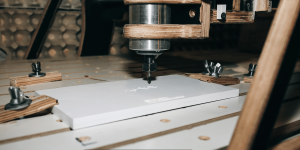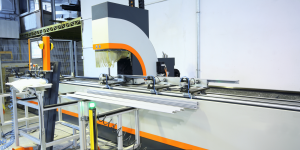Introduction
CNC is an automated method of manufacturing involving the use of coded instructions to control factory tools and machinery. CNC is often used in metal part manufacturing to achieve tight tolerances and to minimize variation from part to part. Aluminum is one of the most used materials in CNC machining due to its properties, such as low density, corrosion resistance, high thermal and electrical conductivity, and ease of machining. There are prospects that CNC machining technologies are improving. Therefore, manufacturers can produce parts from aluminum with more intricate shapes, closer tolerances, and smoother surface finishes than before.
Advantages of Utilizing Sophisticated Computer Numerical Control in Machining Aluminum

There are several key benefits associated with utilizing advanced CNC machining processes for aluminum manufacturing:
Higher Precision and Accuracy
– Modern CNC machines use highly accurate components so that the cutting tools can be located with an accuracy of ± 0. 005mm, leading to high accuracy in machining. This enables aluminum to be machined to excellent tolerance levels.
Increased Automation
– Modern CNC machines are highly computerized and have features such as an automatic tool changer. This means that operator’s interference is minimized and this makes the whole process to be much easier and faster.
Faster Machining Speeds
– High-performance and versatile CNC machines, efficient cutting tools, and optimized tool motion can cut aluminum at much higher rates than standard machines. This results to increased production and output.
Superior Surface Finishes
– Modern CNC controller and multi axis machines help to make aluminum parts with fine surface finishes reducing the post treatment. Achievable surface roughness measured by Ra is as low as 0. 1 micron.
Machining Complex Geometries
– This type of equipment makes it possible to machine very intricate aluminum parts in one setup with 5-axis CNC machining centers. Elements that cover curves, deep pockets and free forms are more accessible to create.
Advanced Aluminum CNC Machining Current and Emerging Trends
There are several emerging trends that are pushing aluminum CNC machining technology into new frontiers:
Micro and Nano Machining
– High accuracy CNC processes facilitate the creation of minuscule aluminum parts with micron and sub-micron dimensions. This supports the trend towards product miniaturization.

Green Machining
– Energy efficient machining methods that replace cutting fluids with compressed air are being used to reduce the environmental impact of aluminum machining. This does away with waste fluids and is environmentally friendly.
Automation and Smart Factories
– CNC machines are increasingly complex and can now be fully automated and self-optimizing, thanks to AI and machine learning. It is a shift towards intelligent factories that has implications of raising consistency and productivity levels.
Use of New Tool Materials
– Aluminium machining is being done at faster speeds, precision, and with longer tool life due to new improved materials like cubic boron nitride and ceramics in cutting tools. This is cost effective and improves the effectiveness of the organisation.
Continuous Improvement Processes
– The top aluminum machining companies are employing continuous improvement methodologies such as Six Sigma and Kaizen to enhance the machining processes. This leads to increased productivity and enhanced quality.
Advantages of New Aluminum Cutting
The increasing sophistication of aluminum CNC machining brings many benefits for manufacturers:
Reduced Operating Costs
– Machining with sophisticated CNC equipment slashes labor costs because of increased automation in operations. It also reduces wastage of materials to bare minimum hence cutting on costs.
Shorter Lead Times
– Increased speed in aluminium part fabrication is made possible by high-speed precision aluminium machining. This makes the production process faster and also enhances the customer satisfaction.
Lighter and Stronger Products
– High-tech processing allows for lighter and more complex aluminum parts with reduced wall thickness, internal voids, and other features. This results in lighter and more robust products.
Improved Quality and Reliability
– CNC machined products made from precision aluminum are accurate in dimensions and possess a high surface finish. This leads to high performance, quality and durability of the end product in the market place.
Increased Design Flexibility
– Multi-axis aluminum CNC machining is preferred as it provides more design flexibility. New shapes that were unachievable or economically unviable in the past can be created.
Conclusion
High precision aluminum CNC machining based on more intelligent machines, superior tools, and automated process is revolutionizing manufacturing. It reduces cost when production is high and allows better accuracy, shorter production time, and quality produce. As customer demands rise, new advancements in machining technologies will assist manufacturers in maintaining competitiveness. Aluminum will continue to be the material of choice for many precision CNC machined components in various sectors due to its enhanced machinability and ability to manufacture lightweight, high strength products.
